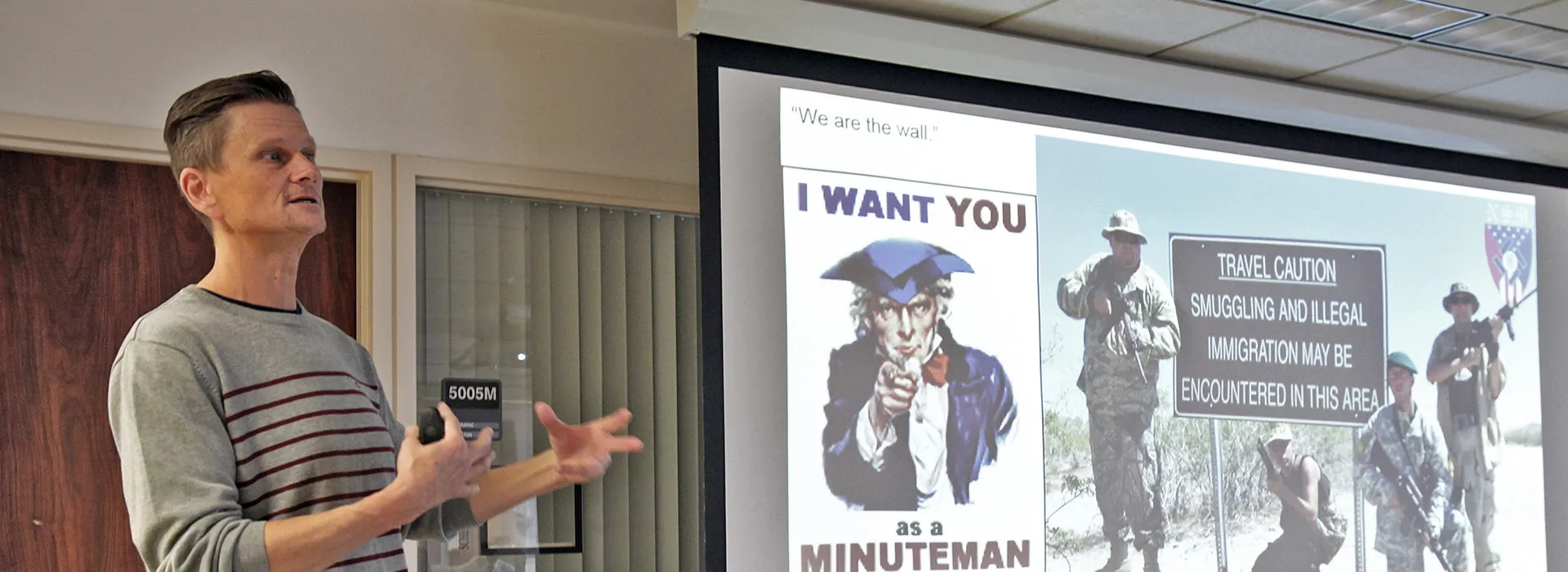Joe Gutierrez Office of Strategic Communication (909) 537-5007 joeg@csusb.edu

Since the mid-1990s, four U.S. administrations have been building a wall along the border the country shares with Mexico.
In that time, the border wall has become a major issue in U.S. politics. According to polls, most Americans don’t want the wall, but politicians in both parties are determined to not only keep it, but to strengthen it and expand it.
That was the focus of a talk by Michael Kohout, a CSUSB professor of geography and enviromental studies, held on Friday, March 2 at the John M. Pfau Library.
Kohout talked about the history, politics and environmental implications of the border wall, as well as sharing images and stories from a recent trip to Texas and Tijuana, where he took pictures of the barrier.
Kohout has written and lectured on the border economy, social movements, and immigration as he has visited, studied and worked along the border on and off for over 20 years.
He has volunteered for several border organizations that champion worker and immigrant rights.
The border wall has become a lightning rod issue as supporters say that the wall will stem the flow of migrants, keeping the nation safe from terrorist attacks and the massive flow of drugs.
But studies show that the wall is not the answer because it does not work.
Instead, it is severing border communities, scarring sensitive landscapes, and damaging the vital relationship between two nations that, for better or worse, need each other now more than ever.